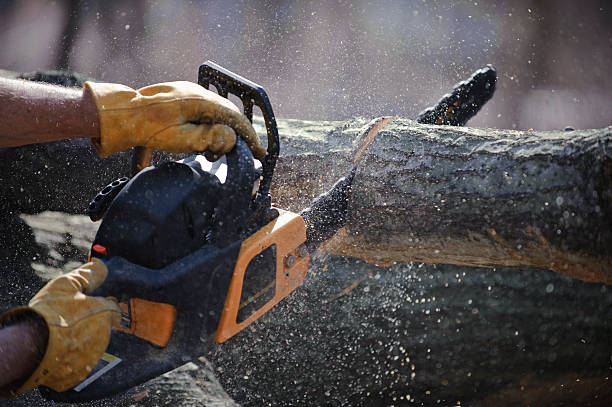When it comes to tree-cutting services, ensuring the safety of the workers and the surrounding area is of utmost importance. The potential hazards and risks involved in this line of work necessitate the implementation of strict safety measures. From using Personal Protective Equipment (PPE) to adhering to industry standards and guidelines, professionals in this field leave no stone unturned in their commitment to safety.
But what exactly are these safety measures? How do they mitigate the risks involved? In this discussion, we will explore the various precautions taken during tree-cutting services, shedding light on the steps taken to protect the workers and the environment.
Personal Protective Equipment (PPE)
When engaging in tree-cutting services, it is crucial to prioritize personal safety by utilizing the appropriate Personal Protective Equipment (PPE). Tree cutting can be a hazardous task, with the potential for accidents and injuries. Therefore, all individuals involved must wear the necessary PPE to mitigate the risks and ensure their safety.
A hard hat is the first and foremost piece of PPE that must be worn during tree-cutting services. This protects the head from falling branches or debris. Safety glasses or goggles should be worn to shield the eyes from flying wood chips, sawdust, or other particles that may cause eye injuries.
Furthermore, wearing ear protection is crucial to safeguard against the loud noise generated by chainsaws and other machinery used in tree cutting. These ear defenders or earplugs help prevent hearing damage and ensure the worker’s long-term oral health.
To protect the hands and fingers, it is essential to wear sturdy and durable gloves. These gloves should be cut-resistant to prevent injuries from sharp tools such as chainsaws or axes.
Lastly, footwear is necessary to prevent slips, trips, and falls. Non-slip boots with steel toe caps offer protection against falling objects and provide stability on uneven surfaces.
Industry Standards and Guidelines
Adhering to industry standards and guidelines ensures tree-cutting services’ safety and efficiency. These standards and procedures establish best practices and promote a consistent approach to tree-cutting operations. They provide a framework that tree-cutting companies can follow to minimize risks and protect their workers and the surrounding environment.
One such important standard is the American National Standards Institute (ANSI) A300 tree care series. This series provides guidelines for tree pruning, tree support systems, tree planting and transplanting, and tree management during construction projects. It sets forth the minimum requirements for safe and effective tree care practices, including proper equipment, techniques, and training.
The International Society of Arboriculture (ISA) also plays a significant role in establishing industry standards. Their Tree Risk Assessment Qualification (TRAQ) program provides a standardized approach to assessing tree risk. It ensures that arborists have the necessary knowledge and skills to evaluate tree health and structural stability, reducing the potential for accidents and property damage.
In addition to these standards and guidelines, local regulations and permits may apply to tree-cutting services. Tree-cutting companies must stay up-to-date with any specific requirements imposed by local authorities to ensure compliance and maintain high safety standards.

